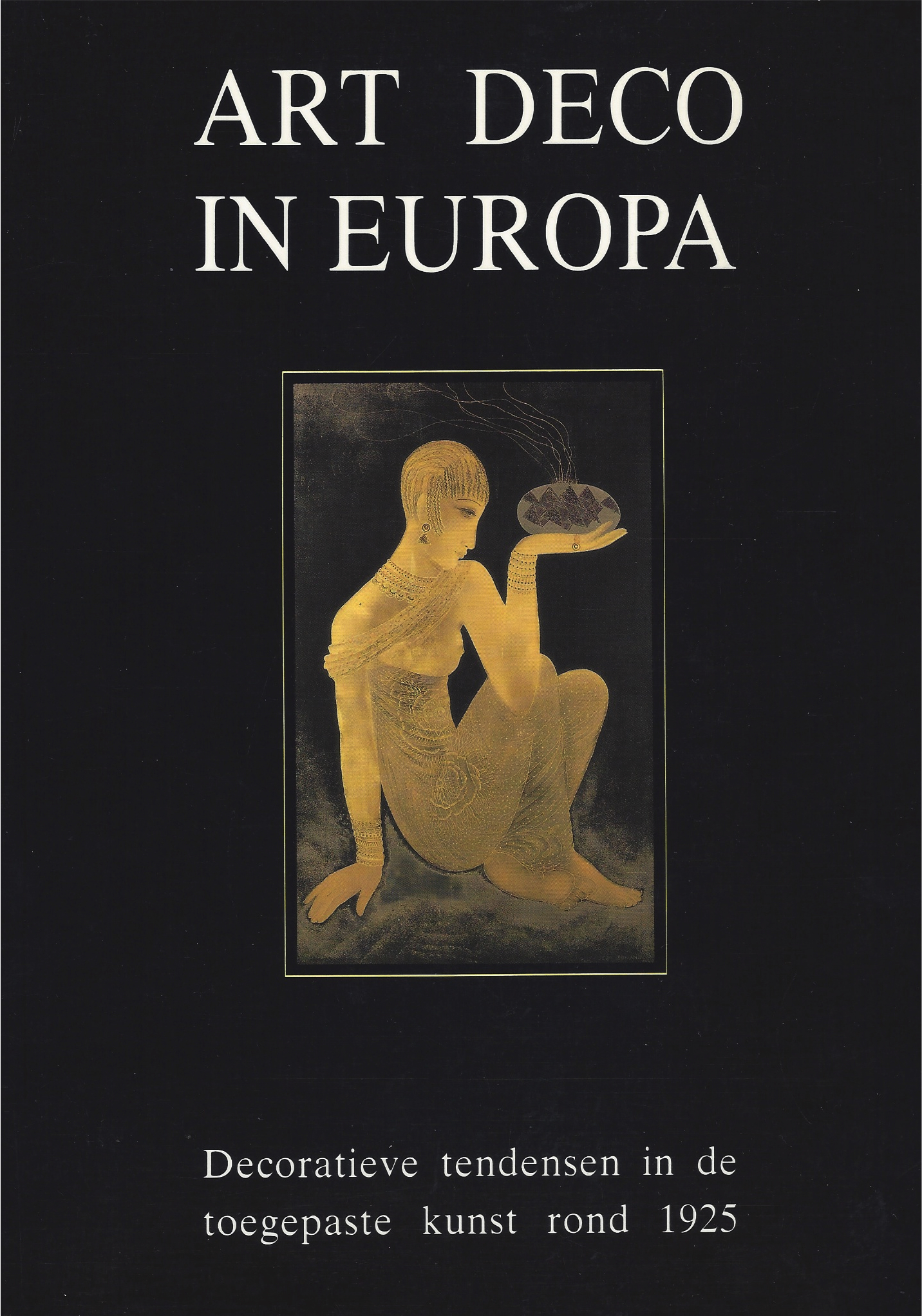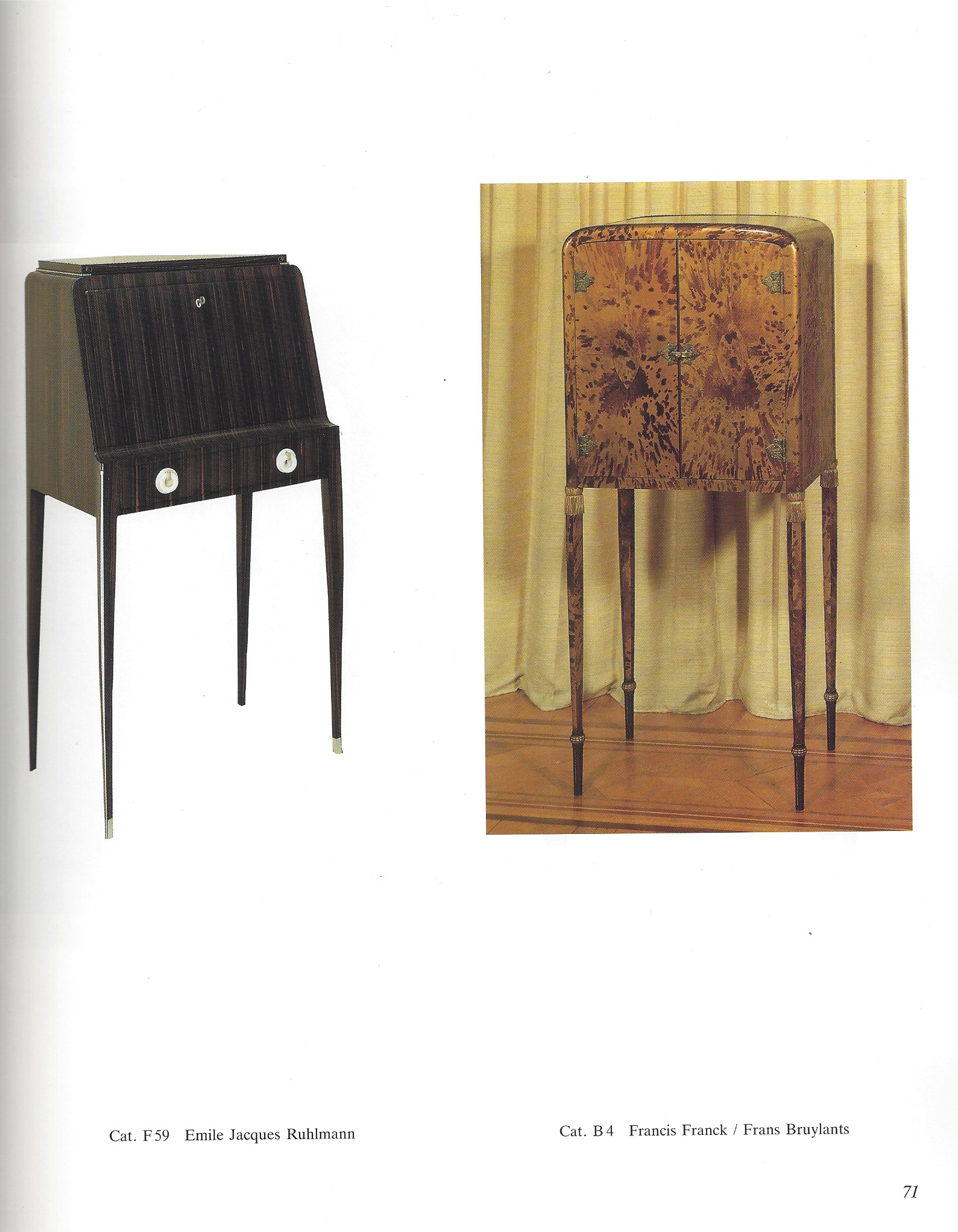24 ¾ in (63 cm) high, 26 in (66 cm) wide, 18 in (46 cm) deep
cf. Erik Müllendorff, ‘The Furniture and Interior Design of Maison Franck of Antwerp (1900-1962)’, Furniture History, Vol. XXXVII, 2002, pp. 150-165
Art Deco in Europa, exh. cat., Palace of Fine Arts, Brussels, 1989, p. 71Through the use of luxurious materials and a mix of contemporary and old styles, Frans Franck was able to create pieces of art that were not only beautiful but unique as well. Through his training and his company, Frans Franck (1872-1932) was able to become one of the most prestigious designers of decorative arts during and after his lifetime. Frans Franck’s use of precious materials attracted many important private and corporate collectors. The use of tortoiseshell in this piece reminds one of the great furniture-maker Boulle. The use of laurel leaf designs and shell patterns recall the past in an elegant revival way. The gold, green, and blue accent colors in the legs and edges accentuate the brown hues in the tortoiseshell inlay. While the decorations of the table may be lovely it is the design of the tabletop and base that make the piece so remarkable. The geometric pattern on the tabletop is in an art deco style, while the base is in a more baroque style. By using the two styles it keeps the viewer interested.
Founded in the late nineteenth century in Antwerp, Masion Franck was important to the neo-classical revival during the 1920s. Inherited by Frans Franck, and his brother Charles Franck, from their father, the company flourished under their watchful eye. Charles ran the business end of the company while Frans created the pieces. It was Frans who made the company famous for its use of tortoiseshell in his furniture pieces. Commonly known as the ‘Franck style’ and usually designed based on historical or neo-classical, romantic art deco styles. Inspired by the Nancy school and Thomas Sheraton, the eighteenth century English furniture maker, these pieces represent the bourgeois consumer base that supported Maison Franck and the family. The sparingly use of such luxurious materials in his works attracted many high profile clients.
Before taking over the family firm, Frans Franck studied at the Royal Academy of Fine Arts in Antwerp, and then moved to Paris where he apprenticed with a cabinetmaker. After moving back to Antwerp, Frans and Charles founded an artistic circle called ‘The Chapel’. The purpose of the circle was to enlighten the people of Antwerp in the arts and bring new artistic ideas to the mainly bourgeois Antwerp. It was through this circle that Frans helped many unknown artists become more popular. After his tragic death in 1932 his son, Francis took over the business until his death in 1965, at which time the company was closed. At the closing of Maison Franck the company had become well known for not only its tortoiseshell pieces but also its unique designs in all decorative arts, including furniture, ceiling panels, and lamps.


















